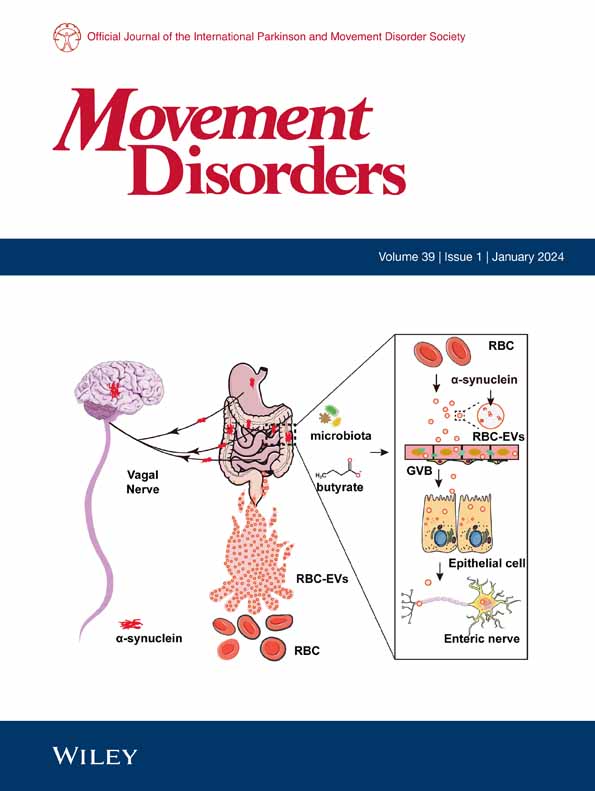类似先天性镜像运动障碍的魏玛犬EFNB3移码变异。
IF 7.4
1区 医学
Q1 CLINICAL NEUROLOGY
引用次数: 0
摘要
背景先天性镜像运动障碍(CMMs)在人类患者中具有临床和遗传异质性。没有文献记载CMMs在动物中自发发生。目的本研究的目的是记录第一例魏玛拉犬自发发生的CMMs,并确定潜在的遗传原因。方法进行临床和病理检查。遗传调查采用连锁和自合子作图,随后对3只患病犬和1489只对照犬进行全基因组测序,以确定疾病相关变异。结果一窝魏玛犬11只幼犬中有3只表现出同步跳跃运动的异常步态。他们的表型暂定为先天性镜像运动障碍1 (CMM1)。潜在的遗传原因被确定为EFNB3编码ephrin-B3的2 bp重复,ephrin-B3是一种跨膜蛋白,在神经发育过程中对轴突引导和脊髓中线屏障形成很重要。识别的变体XM_038536724.1:c。643_644dup,预测会导致移码并引入一个过早终止密码子XP_038392652.1:p.(Ala216Valfs*79)。在这些狗中,CMM1作为常染色体隐性遗传特征遗传。结论:与人类相似,犬类cmm可能是一种由自发产生的遗传变异引起的遗传性疾病。狗的CMM1表型与实验诱导的Efnb3-/-敲除小鼠的表型相似。到目前为止,还没有efnb3相关CMMs患者的报道。我们的研究提供了第一个自然发生的大型动物模型。在病因不明的慢性粒细胞白血病患者中,EFNB3应被视为一种候选基因。©2025国际帕金森和运动障碍学会。本文章由计算机程序翻译,如有差异,请以英文原文为准。
EFNB3 Frameshift Variant in Weimaraner Dogs with a Condition Resembling a Congenital Mirror Movement Disorder.
BACKGROUND
Congenital mirror movement disorders (CMMs) are clinically and genetically heterogeneous in human patients. CMMs have not been documented to occur spontaneously in animals.
OBJECTIVE
The objective of this work was to document the first case of CMMs spontaneously occurring in Weimaraner dogs and to identify the underlying genetic cause.
METHODS
Clinical and pathological investigations were performed. Genetic investigations used linkage and autozygosity mapping followed by whole-genome sequencing of 3 affected dogs and 1489 control dogs to identify disease-associated variants.
RESULTS
Three of 11 puppies in a litter of Weimaraner dogs exhibited an abnormal gait characterized by synchronized saltatorial locomotion. Their phenotype was tentatively termed congenital mirror movement disorder 1 (CMM1). The underlying genetic cause was identified as a 2-bp duplication in EFNB3 encoding ephrin-B3, a transmembrane protein important for axon guidance and spinal midline barrier formation during neurodevelopment. The identified variant, XM_038536724.1:c.643_644dup, is predicted to lead to a frameshift and introduction of a premature stop codon XP_038392652.1:p.(Ala216Valfs*79). CMM1 is inherited as an autosomal recessive trait in these dogs.
CONCLUSIONS
Similar to humans, CMMs may occur in dogs as an inherited disease as a result of a spontaneously arisen genetic variant. The CMM1 phenotype in dogs resembles the phenotype of experimentally induced Efnb3-/- knockout mice. So far, no human patients with EFNB3-related CMMs have been reported. Our study provides the first naturally occurring large-animal model for CMMs. EFNB3 should be considered a candidate gene in human CMM patients with unclear disease etiology. © 2025 International Parkinson and Movement Disorder Society.
求助全文
通过发布文献求助,成功后即可免费获取论文全文。
去求助
来源期刊

Movement Disorders
医学-临床神经学
CiteScore
13.30
自引率
8.10%
发文量
371
审稿时长
12 months
期刊介绍:
Movement Disorders publishes a variety of content types including Reviews, Viewpoints, Full Length Articles, Historical Reports, Brief Reports, and Letters. The journal considers original manuscripts on topics related to the diagnosis, therapeutics, pharmacology, biochemistry, physiology, etiology, genetics, and epidemiology of movement disorders. Appropriate topics include Parkinsonism, Chorea, Tremors, Dystonia, Myoclonus, Tics, Tardive Dyskinesia, Spasticity, and Ataxia.
 求助内容:
求助内容: 应助结果提醒方式:
应助结果提醒方式:


